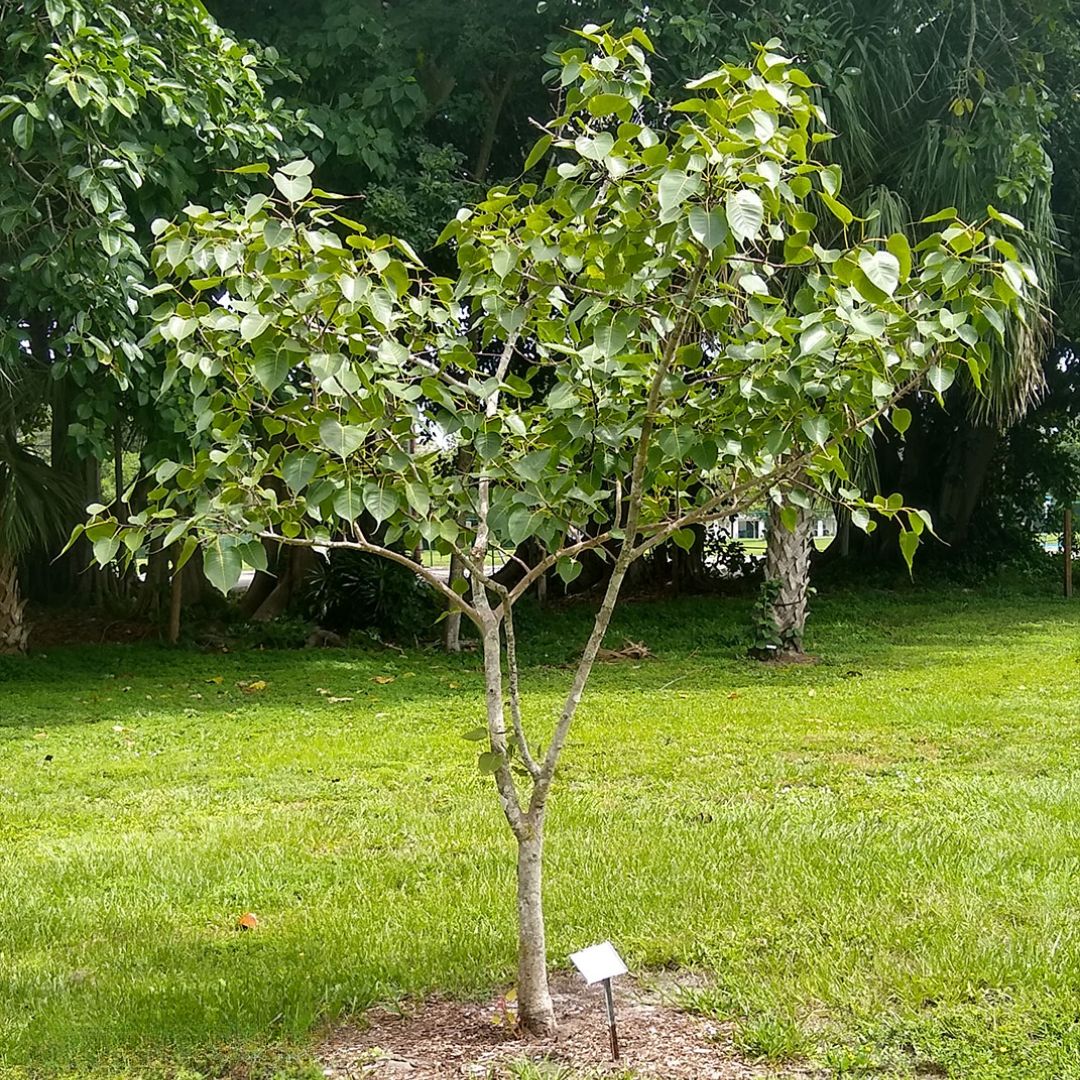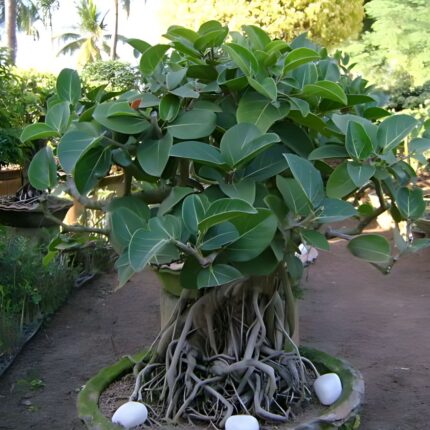Ficus Religiosa (पीपल)
₹2,998.00
Ficus religiosa, commonly known as the Sacred Fig, Peepal, or Bodhi tree, is a large, long-living tree native to the Indian subcontinent and Southeast Asia. It holds immense cultural, religious, and ecological significance in various traditions and ecosystems.
Botanical Information
- Scientific Name: Ficus religiosa
- Family: Moraceae
- Common Names: Peepal tree, Bodhi tree, Sacred Fig
- Native Range: Indian subcontinent, Southeast Asia
Description
The Sacred Fig is a fast-growing, deciduous tree that can reach heights of 30 meters (98 feet) or more. It has a spreading crown and distinctive heart-shaped leaves with a long, tapering tip. The bark is smooth and light gray, aging to a rough, darker texture. The tree produces small, fig-like fruits that are green when immature and turn purple-black when ripe.
Cultural and Religious Significance
- Hinduism: Considered sacred and often planted near temples. It is believed to be the abode of various deities.
- Buddhism: Revered as the tree under which Siddhartha Gautama attained enlightenment and became the Buddha. It is often planted in monasteries and near stupas.
- Jainism: Sacred to Jainism as well, associated with the 24th Tirthankara, Lord Mahavira.
Ecological Benefits
- Air Quality Improvement: The Peepal tree is known for its ability to purify the air by absorbing pollutants and releasing oxygen.
- Habitat: Provides habitat and food for various bird species, insects, and other wildlife.
- Shade: Its large canopy provides extensive shade, cooling the surrounding environment and reducing the urban heat island effect.
Medicinal Uses
Ficus religiosa has been used in traditional medicine for centuries. Various parts of the tree, including leaves, bark, and roots, have therapeutic properties and are used to treat several ailments:
- Leaves: Used for their anti-inflammatory and anti-diabetic properties.
- Bark: Applied to treat skin disorders, ulcers, and digestive issues.
- Fruits: Consumed for their laxative properties and nutritional value.
Uses
- Religious Rituals: Leaves and branches are often used in religious ceremonies and rituals.
- Traditional Medicine: Extracts from various parts of the tree are used in Ayurvedic and traditional remedies.
- Ecological Restoration: Planted in reforestation projects to restore degraded lands and improve soil quality.
Cultivation and Care
- Soil: Thrives in a variety of soil types but prefers well-drained, fertile soil.
- Watering: Requires regular watering during its initial growth period; mature trees are drought-tolerant.
- Sunlight: Prefers full sunlight but can tolerate partial shade.
- Propagation: Typically propagated through seeds or cuttings. Seeds should be soaked and cleaned before planting, while cuttings should be taken from healthy branches.
Conservation
Ficus religiosa is not currently considered threatened, but its natural habitats are subject to deforestation and urbanization. Efforts to plant and protect these trees contribute to biodiversity and the preservation of cultural heritage.
Conclusion
The Ficus religiosa, or Sacred Fig, is more than just a tree. It is a symbol of spiritual enlightenment, a cornerstone of traditional medicine, and a vital component of its ecosystem. Planting and caring for this tree not only honors ancient traditions but also promotes environmental health and sustainability.










